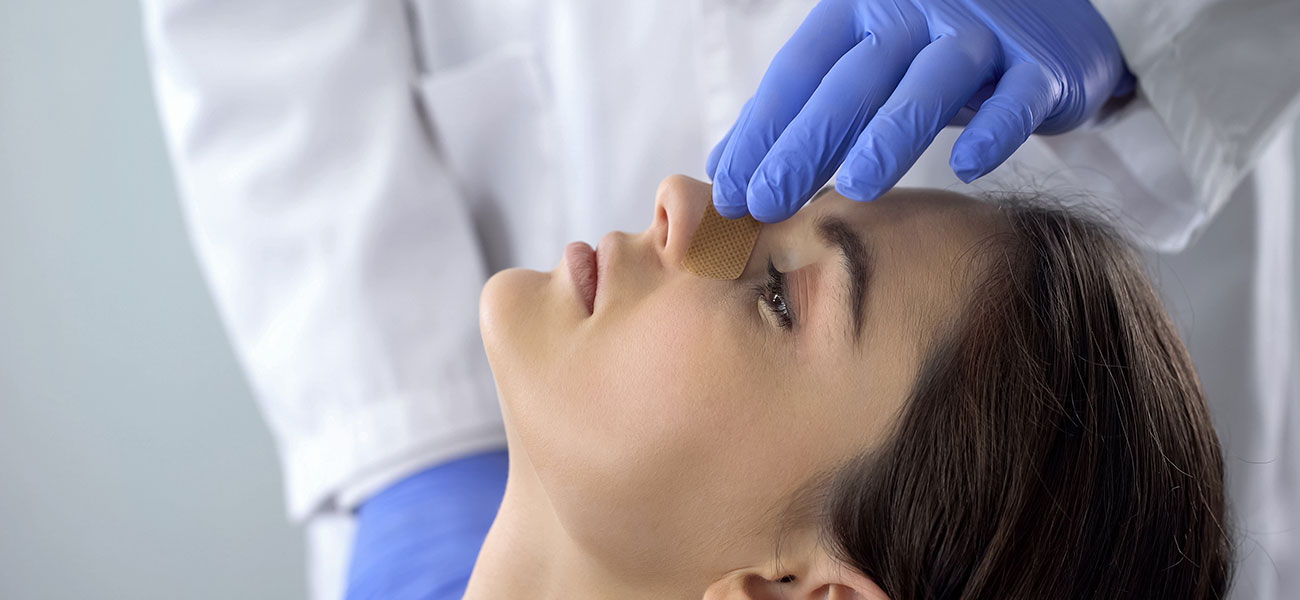Rhinoplasty and Septorhinoplasty: A Step for Breath and Beauty
Rhinoplasty Surgery in Turkey : Our nose, located at the center of our face, plays a significant role not only from an aesthetic perspective but also in vital functions such as respiration. While people often think only about the nose’s impact on facial beauty, the structure of the nose directly affects the process of breathing as well. Therefore, rhinoplasty surgery (nose surgery) is not just a cosmetic operation but can also be a health intervention that enhances quality of life. Septorhinoplasty, on the other hand, is a more comprehensive surgical method aimed at solving both aesthetic and functional problems of the nose.
In this article, we will discuss what rhinoplasty and septorhinoplasty are, who may need these surgeries, how the processes work, and what patients can expect afterward.
What is Rhinoplasty Surgery?
Rhinoplasty surgery, also known as nose surgery, is a procedure performed to correct the external appearance of the nose or make it more harmonious with the face. Aesthetic issues such as a bumpy nose, wide nostrils, low nose tip, reduction of the nose size, and correction of visible deviations can be addressed through rhinoplasty surgery.
Key Aesthetic Goals:
- Making the nose more harmonious with the face.
- Correcting an asymmetric nose structure.
- Reducing or enlarging the size of the nose.
- Lifting or reshaping the nose tip.
What is Septorhinoplasty?
Septorhinoplasty is a surgery that involves corrections to both the internal and external structures of the nose. During this procedure, deviations of the septum (deviated septum) are corrected, allowing the patient to breathe more easily while achieving a more aesthetically pleasing nose.
Advantages of Septorhinoplasty:
- Relieving breathing difficulties.
- Improving the aesthetic appearance of the nose.
- Enhancing the patient’s quality of life.
- Addressing both health and aesthetic issues simultaneously.
Who is Suitable for These Surgeries?
Today, most of the nose surgeries, including rhinoplasty surgery, are performed as septorhinoplasty. In this article, we will refer to both procedures as one and the same. Individuals considering rhinoplasty or septorhinoplasty should meet certain criteria. These surgeries are not only preferred for aesthetic concerns but also for breathing problems that affect quality of life.
Medical Reasons for Rhinoplasty Surgery / Septorhinoplasty / Nose Job Surgery
Rhinoplasty surgery is a surgical intervention that can be performed not only for aesthetic concerns but also to address certain health issues. Here are some medical reasons for undergoing this surgery:
- Difficulty breathing and chronic nasal congestion.
- Narrowed nasal passages.
- Deviated nasal septum.
- Chronic rhinitis caused by structural issues in the nose.
- Structural damage from accidents (trauma).
Aesthetic Reasons for Rhinoplasty Surgery
Rhinoplasty surgery is also commonly chosen by individuals who wish to improve their aesthetic appearance. The main aesthetic reasons include:
- Presence of a prominent bump on the nose.
- Excessively wide nose structure.
- Collapsed or sunken middle portion of the nose (saddle nose).
- Excessively long nose structure.
- Asymmetry in the nose.
- An unattractive nose tip (e.g., thick, pointy, hooked, or drooping tip).
Pre-Surgery Process: Preparation and Planning
Before undergoing rhinoplasty surgery, a detailed preparation process is required. This process begins with clear communication between the surgeon and the patient.
Examination Process
The surgeon will assess both the external and internal structures of the nose while evaluating the patient’s expectations. The bone and cartilage structure of the nose, skin thickness, and other factors are considered. Additionally, the patient’s overall health status is reviewed, and any chronic conditions or medications are evaluated.
Photography and Simulation
Photos of the patient’s nose are taken and discussed. In some suitable cases, programs like Photoshop may be used to digitally show the possible outcomes of the surgery. This process helps both the patient and the surgeon set a common goal.
Setting Realistic Expectations
Certain nasal structures have physical limitations. For example:
- A patient with thick skin on the nose may not be able to achieve a very thin and small nose.
- Completely eliminating deviations or asymmetries is generally not possible.
- Achieving perfect symmetry in the nostrils is not always possible. The surgeon informs the patient and helps set realistic expectations.
How is Rhinoplasty Surgery Performed?
Rhinoplasty surgery is typically performed under general anesthesia. During the procedure, the surgeon can correct both the external appearance and internal structure of the nose. Two main surgical techniques are used: open technique and closed technique.
Open Technique
- A small incision is made at the base of the nose.
- The surgeon has a clearer view of the nasal structure and can perform more complex procedures more easily.
- The likelihood of scarring is low, but over time, the scar becomes invisible.
Closed Technique
- Incisions are made entirely inside the nose, leaving no visible external scars.
- This technique is suitable for aesthetic procedures that require less intervention.
- Due to limited visibility, it may not be suitable for every case and should not be used in all situations.
Piezo Technology
Piezo is not a technique but a device. Using ultrasonic vibrations, this device is used to shape bone or cartilage tissues and is available in most surgical centers today. The special tips of the device and ultrasonic sound waves provide the surgeon with a more precise method compared to traditional bone cutting techniques. This results in more controlled bone cutting and a smoother recovery process for the patient. However, this device may not be suitable for every patient or nose type. The decision to use this device is made based on the surgeon’s detailed examination of the patient.
Post-Rhinoplasty Procedure Care
Rhinoplasty (nose surgery) is an important surgical procedure that enhances both your aesthetic appearance and breathing capacity. Post-operative care is essential to accelerate the recovery process and achieve the desired result. Here is your guide to the post-rhinoplasty process:
First Week: Rest and Patience Time
After surgery, it is essential to give your body time to heal. During the first week, you may experience the following:
Possible Situations:
- Swelling and Bruising: Swelling and bruising around the nose and eyes may occur. These typically peak within 2-3 days and subside within a week.
- Mild Pain and Discomfort: You may experience mild pain during the first few days. Pain relievers prescribed by your doctor will help alleviate this.
- Congestion: You may feel congested due to swelling and internal tampons. This is temporary.
What You Should Do:
- Rest: Rest with your head elevated. Use extra pillows while sleeping to support your head and reduce swelling.
- Cold Compress: Apply a cold compress around your eyes (not directly on the nose) during the first two days to reduce swelling and discomfort.
- Follow Your Doctor’s Instructions: Take your prescribed pain relievers and antibiotics as directed.
What to Avoid:
- Do not press or rub your nose.
- Avoid blowing your nose or trying to stop bleeding.
- Avoid bending, heavy lifting, or physical activities.
Splints and Tampons
After surgery, both the inside and outside of your nose need protection. Your doctor may use the following equipment:
External Splint:
- An external splint (supportive cast) is used to maintain the new shape of your nose.
- It is typically removed within 7-10 days after surgery.
Internal Tampons:
- Supportive tampons or silicone splints inside the nose are usually removed after a few days.
- Although these tampons may make breathing difficult, they will be removed shortly, and you will find it easier to breathe.
Keeping Your Nose Clean and Healthy
One of the most important aspects of post-operative care is keeping your nose clean:
- Saline Spray: Use the saline spray recommended by your doctor to keep your nose moist and prevent crusting inside.
- Gentle Cleaning: When cleaning the tip of your nose, use only cotton swabs soaked in oxygenated water and antibiotic cream. Do not insert anything inside.
- Avoid Blowing Your Nose: Do not blow your nose for at least two weeks after surgery.
Return to Normal Life: What You Need to Pay Attention To
Returning to Daily Life:
- When Can I Return to Work? Most patients can return to work about 1 week after surgery. However, those with physically demanding jobs may need more time to rest.
- Can I Exercise? You should wait at least 2-3 weeks before returning to exercise. For strenuous sports, get your doctor’s approval.
Wearing Glasses:
- Placing your glasses or sunglasses on your nose may put pressure on your nose. Avoid wearing glasses for the first 12 weeks (3 months).
Reducing Swelling and Bruising
It may take some time for the swelling to completely go down, especially the swelling at the tip of the nose, which may persist for several months. However, you can speed up this process by paying attention to the following:
- Keep Your Head Elevated: Continue to keep your head elevated while sleeping or resting.
- Avoid Salty Foods: Salty foods can cause fluid retention in your body, which may increase swelling.
- Be Patient: It may take about 6 months to 1 year for your nose to fully take its final shape.
Skin Care and Sun Protection
Since your nose will be sensitive after surgery, it is important to take care of your skin:
- Be Careful with Sun Exposure: Protect your nose from the sun after surgery. Use sunscreen and wear a hat when outdoors.
- Gentle Touch: Avoid products or harsh cleaning methods that may irritate your nose.
When Should You Contact Your Doctor?
Some situations after surgery are normal, but you should inform your doctor if you experience any of the following symptoms:
Normal Symptoms:
- Light bleeding or pink discharge.
- Swelling, bruising, and slight tenderness in the nose.
Symptoms to Watch Out For:
- Excessive bleeding.
- Severe and persistent pain.
- Fever above 38°C or signs of infection (redness, increased swelling, or bad odor).
- Sudden difficulty breathing.
Your doctor will always be there to support you in managing any complications during your recovery process.
Conclusion: Be Patient and Give Yourself Time
The recovery process after rhinoplasty nose reshaping surgery requires patience and care. The swelling and minor discomfort you experience in the first few weeks are temporary. It will take time for your nose to fully heal and for you to achieve your desired result. Take good care of yourself, follow your doctor’s instructions carefully, and enjoy this journey. Remember, at the end of this process, both your appearance and quality of life will improve significantly!
Instagram : prof.dr.gedizmuratserin




